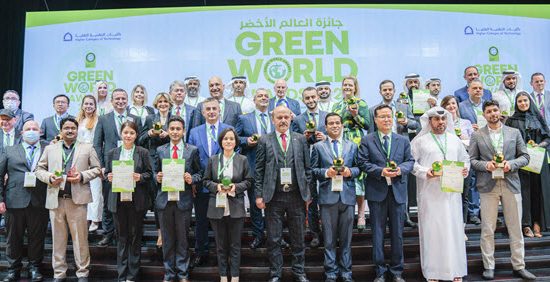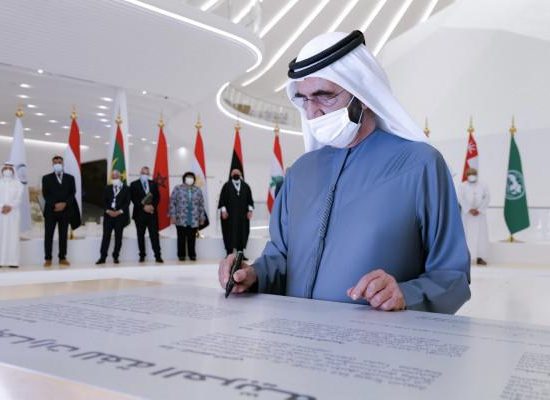KUWAIT. A recent report issued by KFH Research, a subsidery for KFH Group, sees continued positive outlook for the Kuwaiti construction industry, on the back of strong domestic demand in the Kuwaiti economy and a pick-up in government capital spending.
Overview and Outlook
“While we remain fundamentally cautious about the country’s medium-term investment outlook, we note that higher growth in bank lending over the last few months of 2013 and signs of progress on some of Kuwait’s development projects have improved growth prospects. Since the election of a new parliament in July 2013, the government attempted to move forward on long stalled infrastructure development projects and implement increases in public capital expenditure.
This seems to be paying off; looking at government expenditure on construction, loans for private sector construction projects and remittances sent by Pakistani workers, we note that there has been a generally improving picture across the board, in line with estimates that the industry grew by 3.9% y-o-y in 2013. As such we maintain our outlook for the country’s construction sector for 2014, which should see real growth of 5.7% y-o-y.
Despite having one of the more developed public-private partnership models in the GCC, which should give the market an edge in the highly competitive and lucrative region. It was announced in mid-December 2013 that Kuwait is set to finalise USD1.4bln worth of financing from a consortium of lenders as part of the country’s first public-private partnership (PPP) for the first phase of the 1.5GW Az-Zour North power plant and desalination facility. In February the Kuwaiti parliament voted to probe the tender, after accusations of irregularities awarding the contract.
In another development there are plans to offer shares in three of Kuwait’s largest planned projects by the end of 2014, as announced by the Partnerships Technical Bureau (PTB), and the organisation in charge of Kuwait’s Public Private Partnership (PPP) programme. The three ventures will be the Al-Abdaliyah solar power plant, Al-Zour North power plant (second phase), and the Kabd solid waste recycling plant. Project companies are to be established for the assets by the selected bidders and it is expected that a 60% stake in the project company will then be publically offered.
Of the shares being publically offered 40% will be open to foreign investors, 50% to Kuwaiti nationals, and 10% for government bodies. A similar means of opening up the utilities sector to investors has recently succeeded in Oman. Al Suwadi Power Co, which owns and operates the Barka 3 plant, and Al Batinah Power Co, which operates the Sohar 2 plant were the two project companies which were recently opened to investors in a similar manner Kuwait is pursuing for its own assets. Both firms offered 35% of their total shares under a deal agreed with the Omani government, with whom they each have a 15-year supply deal.
Prior to the IPOs, they were owned by GDF Suez (which had a 46% stake), Multitach (22%), Sojitz Corporation (11 %), Shikoku Electric Power Co (11%) and Oman’s Public Authority for Social Insurance (10%). Al Suwadi Power Co was more than ten times oversubscribed. Meanwhile, demand for Al Batinah Power Co shares was more than 5.5 times the amount issued.
Opportunities Abound
There is plenty of potential in the Kuwaiti market, should investor interest remain and the government carries out its proposed spending plans. The government’s 2014/15 budget is expansionary, with expenditure growth of 3.2%, to KWD21.9bln (USD77.3bln).
Although lower average crude prices and near-flat non-oil revenue growth could lead to a decline in government income, Kuwait should benefit from a moderate increase in oil production and exports. This budget is supportive of government is plans to invest USD75bln in several energy, power and housing projects in the country by 2016.
Transport Infrastructure
Kuwait’s transport sector growth is set to be driven by government attempts to boost regional integration with GCC members and provide the infrastructure for a more diversified economy. The transport system is modern and efficient, with a road system that is well developed by regional standards. Of the 5,749km of roads in the country, 85% are paved and most people travel by car.
Transport infrastructure in Kuwait is largely controlled by the state and the decision-making process, as with the development of other infrastructure, is lengthy and non-transparent. These factors impact on the country’s internal transport needs and look set to delay the development of the new rail system, port and other transport infrastructure.
Energy and Utilities Infrastructure
While Kuwait’s economy is bolstered by plentiful oil revenues the country’s energy infrastructure still faces issues in meeting supply shortfalls. The country’s power stations struggle to produce a mere 4-5% above peak average summer demand of 10,700MW, well below the 10-15% margin required for an ideal reserve supply.
Although concerns present clear risks for investors and industries, particularly those relying on a steady supply of energy,Kuwait’s demand for power and underinvestment in the sector provide it with significant growth potential.
Electricity supply is expected to rise to 65.9 terawatt hours (TWh) by 2016. However, this represents a close margin with average demand likely to reach 57.2 TWh and peak load shortfalls continuing to be a problem for energy providers. The country’s laws have helped private power and water schemes, by making it obligatory for all power schemes larger than 500MW to be developed as independent water and power projects (IWPPs). Smaller power projects continue to be carried out as lump sum turnkey projects for the Ministry of Electricity & Water.
Residential and Non-residential Infrastructure
The residential/non-residential construction sector is set to benefit greatly from the government’s plans to diversify the economy and move itself up the hydrocarbons industry value chain. Also, Kuwait was one of the first countries in the region to announce an increase in social spending in the wake of the Arab Spring and, buoyed by elevated oil production, we believe the government is well placed to sustain its social spending commitments.
The stimulus package will boost spending and building on social projects, and will play an increasingly critical role in stimulating the country’s wider economic activity. As of June 2014, the major ‘Silk City’ development has had its master plan approved by the government. Although we note that the project has been on hold for some time, the proposed 250 square km (62,000-acre) planned urban area in Subiya, northern Kuwait, is a prime example of Kuwait’s attempt to diversify its economy away from the oil sector.
Social Infrastructure
Education is emerging as a major new thrust of government policy. Kuwait has the region’s second-largest higher education building programme, which is centred on the USD3bln Sabah al-Salem university project. A USD245.1mln contract to build another university complex in Kuwait has been awarded to UAE-based developer Arabtec.
The country’s healthcare development plan centres on the construction of eight public hospitals by 2016, in order to deal with the heavy pressure placed on the healthcare sector. Other developments, such as a USD160mln project to build nine towers to be annexed to hospitals, adding 2,000 hospital beds, suggest that there is political support for the necessary healthcare drive. There is also a series of planned investments to overhaul medical facilities and health centres.
Residential
There appears to be increasing political confirmation of the country’s housing problems. Indeed a government poll at the end of 2013 indicated that housing is the most pressing issue for Kuwaitis who say they have to wait up to 20 years for a government-subsidised home. However, given Kuwait’s tight housing supply and the limited land available for new development, the matter that needs great and continued efforts at all levels.
As such, social housing is a priority for the Kuwaiti government, which plans to use PPP structures to deliver low-cost housing. Kuwait’s to construct 80,000 housing units between 2010 and 2016, part of the development of Al-Khairan and Al-Mutlaa.
Reports of deals worth USD1.81bln – including four residential areas – suggest that the Public Authority for Housing Welfare (PAHW) is serious about meeting its ambitious targets, although the involvement of private sector operations and capital will be contingent on the level of private sector involvement in the developments.
One such project is the Sabah al-Ahmed Urban Housing Project, which will involve the construction of 11,000 residential units to house 100,000 people. The aim is to tender the contract as a build, operate, transfer (BOT) scheme.
Kuwait is also looking to the private sector to back major high-end residential housing projects. One of the biggest real estate projects is the so-called Pearl City, a waterside development located 85km south of Kuwait City. The development will eventually be home to a population of around 100,000 people. Another development is the Madinat Al Hareer (City of Silk).
The mixed-use development will cover an area of 250 square km. The city will be divided into four main districts: Educational City, Finance City, Leisure City and Ecological City. News on both projects has been scarce, leading to questions over whether they were white elephant projects from the pre-crisis era. News that the government plans to build three new residential cities in the southern part of the country, at a combined cost of USD441mln, is in line with our view that social spending will be a key focus for the government. Housing will therefore underpin much of the expected growth in the residential/non-residential construction over the next few years.
In line with this view, and addressing our concerns over a lack of available land for house building, state-owned Kuwait Oil Company (KOC) has given about 70mln square metres of land for the construction of housing units, signalling a rare step taken by a public sector oil and gas firm, reports KUNA. Nearly 43,000 homes are likely to be built on the area.
The land has been allotted at the south of Saad Al Abdallah on the Sixth Ring Road motorway, which offers easy accessibility, according to a statement by the minister of communications and municipal affairs. The move will provide relief to at least 50% of the long waiting list of Kuwaiti citizens for the possession of free public accommodation.”
This entry passed through the Full-Text RSS service — if this is your content and you’re reading it on someone else’s site, please read the FAQ at fivefilters.org/content-only/faq.php#publishers.








